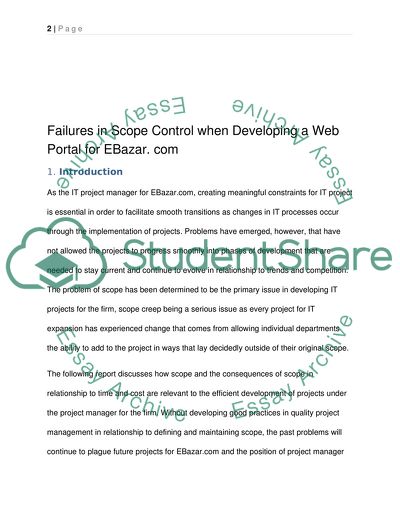Cite this document
(Failures in Scope Control when Developing a Web Portal for EBazar.com Case Study Example | Topics and Well Written Essays - 2000 words, n.d.)
Failures in Scope Control when Developing a Web Portal for EBazar.com Case Study Example | Topics and Well Written Essays - 2000 words. https://studentshare.org/information-technology/1780508-it-project
Failures in Scope Control when Developing a Web Portal for EBazar.com Case Study Example | Topics and Well Written Essays - 2000 words. https://studentshare.org/information-technology/1780508-it-project
(Failures in Scope Control When Developing a Web Portal for EBazar.Com Case Study Example | Topics and Well Written Essays - 2000 Words)
Failures in Scope Control When Developing a Web Portal for EBazar.Com Case Study Example | Topics and Well Written Essays - 2000 Words. https://studentshare.org/information-technology/1780508-it-project.
Failures in Scope Control When Developing a Web Portal for EBazar.Com Case Study Example | Topics and Well Written Essays - 2000 Words. https://studentshare.org/information-technology/1780508-it-project.
“Failures in Scope Control When Developing a Web Portal for EBazar.Com Case Study Example | Topics and Well Written Essays - 2000 Words”. https://studentshare.org/information-technology/1780508-it-project.


